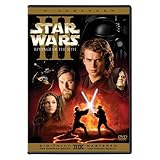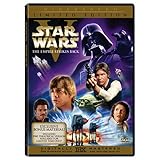 |
| Click to Purchase Blu-Ray/DVD Combo Pack on Amazon.com |
I recently had the pleasure of watching Necessary Evil: Super-Villains of DC Comics, a documentary about the origins and motivations of the “bad guys” who battle the various superhero icons of the DC Comics Universe. The film uses interviews with writers, actors and directors to examine the motivations behind such memorable characters as Lex Luthor, the Joker and Sinestro.
Regardless of if you're writing a superhero action epic, an intimate family drama, or an over-the-top slapstick comedy, you need a strong antagonist. While some films use larger entities (Mother Nature, the Devil, the System) as a barrier in the protagonist's quest, most scripts employ a personification of these forces to stand in the hero's way.
However, your antagonist needs more than a black hat and a spindly mustache to be truly memorable. Here are some keys to creating the characters that audiences love to hate.
 |
| Click to Purchase DVD on Amazon.com |
Opposing Forces
The saying “opposites attract” may not always in relationships, but it does for audiences. Moviegoers want to see two contrasting characters clash in intense and fascinating ways. If your protagonist breaks the rules to achieve a just outcome, then your antagonist must employ the rules almost solely for his own benefit. In The Heat, by-the-book FBI Agent Sarah Ashburn (Sandra Bullock) confronts Boston Police Detective Shannon Mullins (Melissa McCarthy) on her lack of procedural compliance, fashion sense and personal hygiene. |
| Click to Purchase Blu-Ray on Amazon.com |
Lack of Responsibility
Audiences admire the protagonist who will take responsibility for his own mistakes, while they heap disdain on those who point fingers and avoid blame. You can create some interesting conflicts when your protagonist tries to get your antagonist to fix the damage he's caused, while the antagonist blames everyone else around him. In Thor, Loki (Tom Hiddleston) blames both Odin (Anthony Hopkins) and Thor (Chris Hemsworth) for his villainous ways and refuses to take responsibility for his actions. |
| Click to Purchase Blu-Ray/DVD Combo Pack on Amazon.com |
 Unjust Actions
Unjust Actions
From childhood, we're told, “life isn't fair”. While real life is rarely fair, audiences expect movies to address obvious injustices. Your antagonist must create unjust situations that force the protagonist to overcome them – and the audience to root for him to do so. In The Hunger Games: Catching Fire, President Snow (Donald Sutherland) continually institutes unjust changes in the rules of the Hunger Games to keep Katniss Everdeen (Jennifer Lawrence) from addressing the injustices of the Panem government.
 |
| Click to Purchase Blu-Ray/DVD Combo Pack At Amazon.com |
Doubling Down
As your protagonist gets closer to his goal, your antagonist should double down on his efforts to stop him. These efforts raise the stakes for the hero and emphasize the ruthlessness of the villain. The antagonist's renewed efforts often become less subtle, more violent or more unreasonable. In Machete Kills, the efforts of billionaire Luther Vos (Mel Gibson) to stop Mexican agent Machete (Danny Trejo) escalate all the way to launching a nuclear weapon and escaping in his own private spaceship. |
| Click to Purchase Blu-Ray/DVD Combo Pack At Amazon.com |
Villain as Hero
If you were to switch the roles of the protagonist and antagonist, would your script still make sense? The answer to this question can turn your antagonist from a plot device into a fully-formed character. Each of your characters must function as if they have their own story to tell. This idea is especially true for the main antagonist most of all, as the villain's story serves to highlight the hero's qualities. In Captain Phillips, the pirate leader (Barkhad Abdi) takes over a cargo ship captained by Richard Phillips (Tom Hanks), not because he's an evil terrorist, but because he needs the money from the theft to feed his family.If you need help in creating a powerful villain in your script, contact us at StoryIntoScreenplayBlog [at] gmail [dot] com. We provide one-on-one consultations for newbie screenwriters and can help you get your script ready for pitches, contests or direct sales. You can also Like us on Facebook, follow us on Twitter, and purchase home videos through our Amazon links.
NOTE: You can also find me at the Texas International Comic Convention (aka Comicpalooza) in Houston Memorial Day weekend. I'll be there along with a truly legendary writer who knows a little something about creating memorable villains.
If you'd like to discuss your project, and if you'll be attending the convention, please send an e-mail with the subject “Comicpalooza” and a method of contacting you. Hope to see you there!







